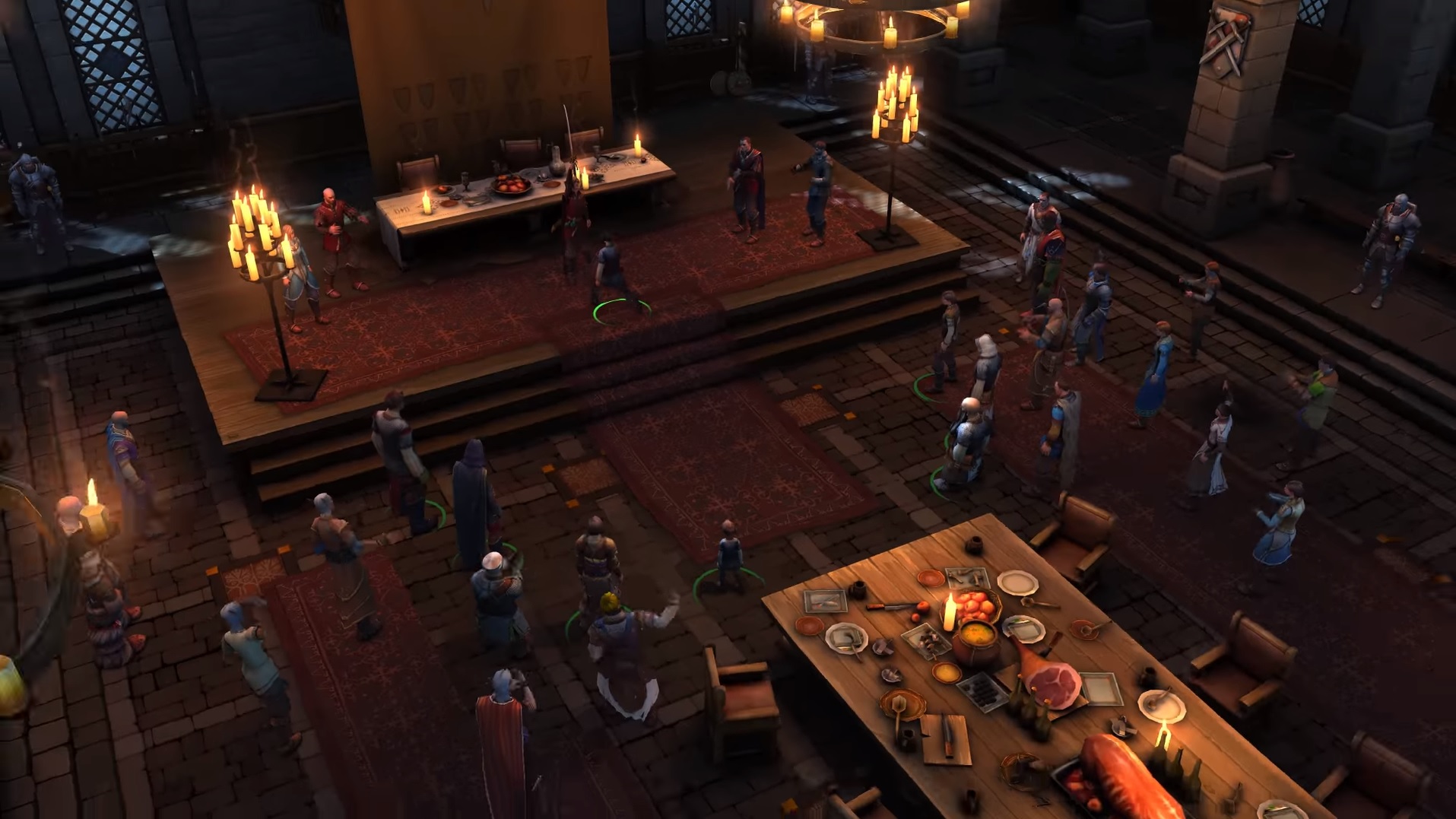In Pathfinder: Kingmaker, You’re an Adventurer and a Ruler
With Pathfinder: Kingmaker, due out this summer, the tabletop setting finally seems poised to make a big splash on the computer RPG scene.
SAN FRANCISCO — Tabletop RPG fans are probably never going to settle the question of whether Dungeons & Dragons or Pathfinder is the superior system. But when it comes to video games, there’s no denying that Pathfinder feels a little underrepresented, with a grand total of one digital title to its name (based on its card game spinoff, at that).

With Pathfinder: Kingmaker, due out this summer, the setting finally seems poised to make a big splash on the computer RPG scene. This retro adventure, reminiscent of Baldur’s Gate and the other Infinity Engine titles, nevertheless has at least one very original idea up its sleeve. While the bulk of the game looks like a classic role-playing adventure — delving into dungeons, recruiting companions, forging a narrative through dialogue, and so forth — the game will also make good on its name, by giving you an entire kingdom to rule as you see fit.
MORE: Best Gaming Mice
I went hands-on with Pathfinder: Kingmaker at GDC 2018, and save for the niceties of the rules (and the high-res graphics), I would have easily believed I was playing another Infinity Engine AD&D adaptation from the early 2000s. The game casts you as an adventurer (you get to choose your name, race, class and sex, naturally) who’s promised a barony — before getting embroiled in a politically charged first act involving bandits, spy rings and fostering peace between blood enemies.
I played through an early mission in Pathfinder: Kingmaker, which involved hunting down a spy that had wronged my party earlier in the story. As I entered a new area, I discovered that the diminutive species who inhabited its underground tunnels — the reptilian kobolds and the goblinoid mites — were at war due to the interference of a new kobold high priest. One thing led to another, and before I knew it, I was exploring the overworld for treasure, occasionally venturing underground to assure both sides that I was simply a neutral party.
Naturally, I needed to get involved in the kobold/mite dispute in order to advance the story, but how I did so was completely up to me. Since my character was of Neutral alignment (alignments can change over time, but it takes a lot of effort), I was able to convince the warring parties that I could act as an arbitrator, and investigate the priest at the center of their dispute.
I could also have sided with one side to wipe out the other, or simply killed them both in order to get the artifact I needed to advance. Like the games that inspired it, Pathfinder: Kingmaker lets you decide how diplomatic or bloodthirsty you want to be as you advance.
Combat should be familiar to anyone who’s played a party-based PC-style RPG in the last two decades or so. When combat begins, the isometric game automatically pauses so that you can issue orders to your six-person party. Your warriors can get up close and personal with enemies, while mages and clerics can cast spells from afar.
You can let the battles play out in real-time, or pause and micromanage your team constantly. With ten different companions to choose from, you can customize your party more or less any way you see fit. (Your party members will also engage in dialogue about their backstories, the overall narrative and any romantic overtures you see fit to make.)
Things proceeded smoothly for the rest of my demo, as I unmasked the kobold priest as the renegade spy I’d been tracking, and went on my way with compliments from both the kobolds and mites, who agreed to bury the hatchet. What I didn’t get to try for myself was the kingdom management part of the game — although I did get to see some of it in a brief video.
Once you receive your promised barony, you can build up your kingdom any way you see fit, provided you have the money and influence. Your moral alignment — and the way you’ve treated the characters and world around you — will play a big role in determining how your lands look. For example, a party that goes out of its way to be kind and helpful might see their town square full of happy villagers and festive streamers. A neutral leader might have a few shop stalls and guards. One who embraces evil will see a gallows manned by undead abominations.
Your playstyle will also affect the allies who show up in your territory to join your cause. Good-hearted players might attract monster hunters, evil ones might invite bandits, and so forth. While Baldur’s Gate II played around with a similar management system, the one in Pathfinder: Kingmaker appears to be much more robust. But we’ll have to wait until we get a more extensive hands-on to be sure.
In the meantime, Pathfinder: Kingmaker should be out within the next few months, and may cost between $30 and $40; Owlcat Games is still determining a final price.
Sign up to get the BEST of Tom's Guide direct to your inbox.
Get instant access to breaking news, the hottest reviews, great deals and helpful tips.
Marshall Honorof is a senior editor for Tom's Guide, overseeing the site's coverage of gaming hardware and software. He comes from a science writing background, having studied paleomammalogy, biological anthropology, and the history of science and technology. After hours, you can find him practicing taekwondo or doing deep dives on classic sci-fi.

